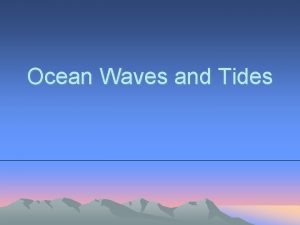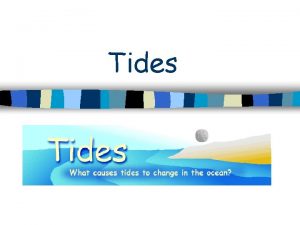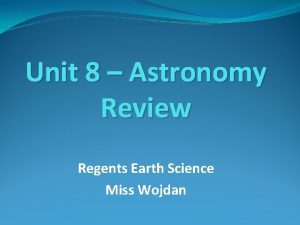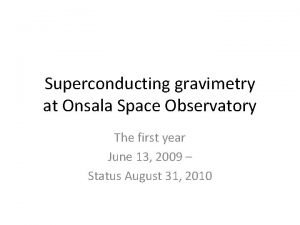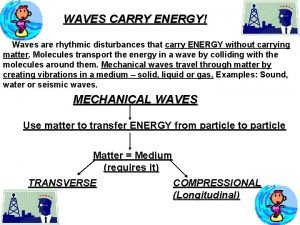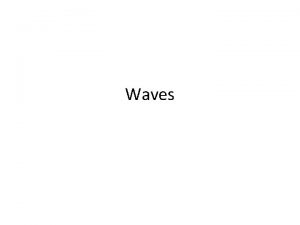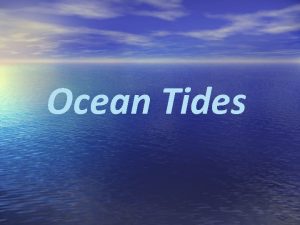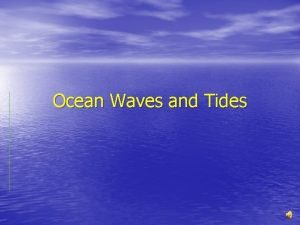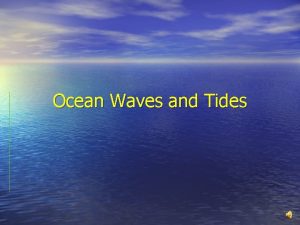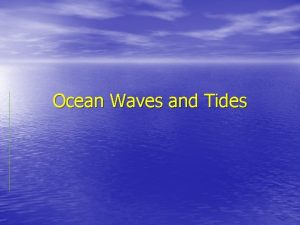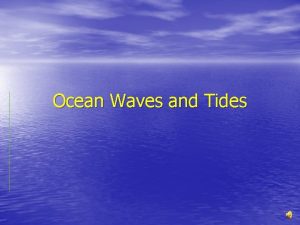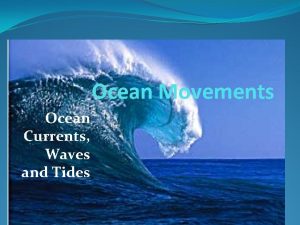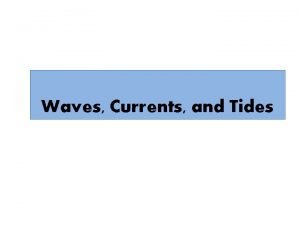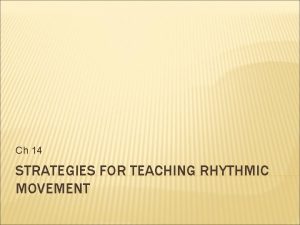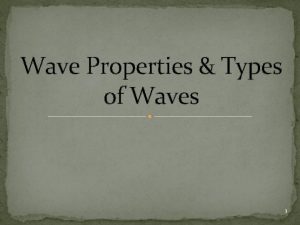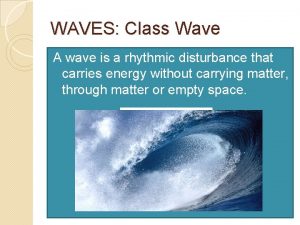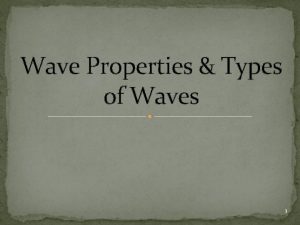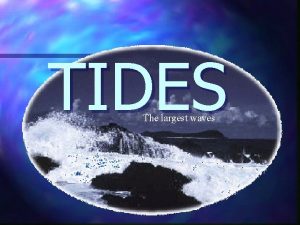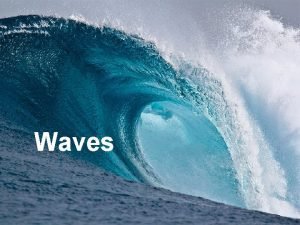Ocean Waves and Tides Wave rhythmic movement that


















- Slides: 18

Ocean Waves and Tides

Wave – rhythmic movement that carries energy through matter or space

• Waves look like hills and valleys; the crest is the highest point and the trough is the lowest point.

• Wavelength is the horizontal distance between crests or troughs of two adjacent waves.

• Wave height is the vertical distance between crest and trough.

• As a wave passes, energy moves forward; the water molecules remain in about the same place.

• A breaker is a collapsing wave.

• Friction with the ocean bottom slows water at the bottom of the wave. • Eventually the top of the wave outruns the bottom and it collapses.

• Wind forms waves as water piles up; wave height depends on wind speed, distance over which the wind blows, and the length of time the wind blows.

• The rise and fall in sea level, called a tide, is caused by a giant wave produced by the gravitational pull of the Sun and the Moon

• High tide – as the crest of this giant wave approaches shore, sea level appears to rise.

• Low tide – later, as the trough of the wave approaches, sea level appears to drop.

• The tidal range is the difference between the level of the ocean at high tide and low tide.

• Tidal range can vary; most shorelines have tidal ranges between 1 and 2 m • Some have tidal ranges of only about 30 cm • Other places have tidal ranges as high as 15 m

• When a rising tide enters a shallow, narrow river from a wide area of the sea, a wave called a tidal bore forms.

• Tides are caused by the interactions of gravity in the Earth-Moon system.

• When the Sun, Earth, and the Moon line up in certain ways, the Sun can strengthen or weaken the Moon’s effects. • Video

• Springtides – higher high tides and lower low tides • Neap tides – lower high tides and higher low tides
 Citlalli dominguez
Citlalli dominguez Spring tide position
Spring tide position Rhythmic movement that carries energy through matter
Rhythmic movement that carries energy through matter Periodic rise and fall of sea level
Periodic rise and fall of sea level Semidiurnal tide
Semidiurnal tide Ocean tides observed at coastal locations
Ocean tides observed at coastal locations Gravimeter
Gravimeter Rhythmic disturbances that carry energy
Rhythmic disturbances that carry energy Rhythmic disturbances that carry energy
Rhythmic disturbances that carry energy What is disturbance in waves
What is disturbance in waves Early experiences in rhythmic movement should focus on
Early experiences in rhythmic movement should focus on Compare and contrast p waves and s waves using venn diagram
Compare and contrast p waves and s waves using venn diagram Chapter 15 ocean water and ocean life wordwise answer key
Chapter 15 ocean water and ocean life wordwise answer key Phân độ lown ngoại tâm thu
Phân độ lown ngoại tâm thu Block av độ 2
Block av độ 2 Thể thơ truyền thống
Thể thơ truyền thống Thơ thất ngôn tứ tuyệt đường luật
Thơ thất ngôn tứ tuyệt đường luật Chiến lược kinh doanh quốc tế của walmart
Chiến lược kinh doanh quốc tế của walmart Tìm độ lớn thật của tam giác abc
Tìm độ lớn thật của tam giác abc


